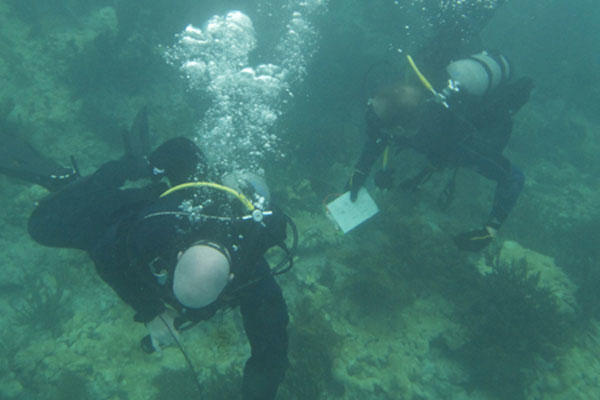Beneath the blue waters of the Florida Keys, the continental United States’ only living-coral barrier reef stretches for miles. The reef and surrounding waters generate more than $2.3 billion annually for the local economy, create more than 33,000 ocean jobs throughout the Florida Keys and support fisheries that feeds millions.
Across this economically important area, the Coast Guard maintains 450 buoys, markers and aids to navigation that safely guides water traffic through the Florida Keys National Marine Sanctuary, stretching 2,900 nautical miles from the Dry Tortugas National Park to Fowey Rock near Miami.
“The navigational aids maintained by the Coast Guard inside the Florida Keys National Marine Sanctuary ensure the safe flow of vessel traffic while preserving and protecting the area’s natural habitats and coral,” said Petty Officer 1st Class Ryan Nicholson, Aids to Navigation Team Key West’s executive petty officer. “We see the aids guiding boat traffic on the surface, but we have to use divers to ensure that they’re doing their second job, protecting and not impacting the endangered sea habitats underwater.”
The Maritime Security Response Team’s Regional Diver Locker East supports this mission with their specialized training and capabilities. The MSRT, like most Coast Guard units, is multi-mission and scalable. In addition to its primary homeland security mission, the team deploys divers to provide aids to navigation, search and recovery and ship’s husbandry support to Coast Guard units throughout the country.
“Our mission with ANT Key West is to inspect the sea floor and coral growth around the navigational aids,” said Chief Petty Officer Stephen Doty, dive team leader. “We’re trained to look for endangered coral, specifically the elkhorn and staghorn coral, report our findings to the 7th Coast Guard District, then provide support to repair or replace any damaged aids if needed.”
While conducting each environmental surveys, one diver records video of the coral and measures distances from aid while the second diver documents the status of the sea floor and coral on a waterproof clipboard. This precise mapping around each aid is essential for developing navigation management strategies that balance the protection of these habitats with their use.
The 7th Coast Guard District takes the report generated by the divers and coordinates with NOAA’s National Marine Fishery Service, the agency responsible for the stewardship of the nation’s living marine resources and their habitats. Together, they determine if any changes need to be made to the aid or its location to account for new coral growth.
After the plan is developed, divers guide pilings to the safe areas of sea floor and recover debris from hurricanes during aid repair and re-positioning to ensure that the endangered coral is not harmed by surface construction.
This comprehensive and coordinated approach to the management of the aids and coral inside the Florida Keys National Marine Sanctuary demonstrates the Coast Guard’s commitment to maintaining America’s maritime resources.
“Maintaining the aids in a way that protects the Keys’ natural resources is important to the enviornent, the residents of Florida and the millions or tourist who visit the Key’s each year,” said Doty. “As a Coast Guardsman and a diver, I’m proud that our efforts to be good stewards of the environment will ensure that the sanctuary’s reefs will be here for future generations.”




























